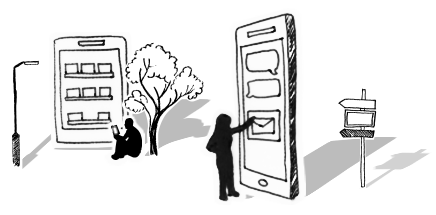




Why You Need a Clear Business Case for Change
If your organisation is planning a change or a complete transformation to stay ahead of the curve, you should be familiar with the need for a robust business case.
We’re frequently approached by organisations who tell us their change is failing. But often, they don’t know if it is actually failing, because they’re not clear on the outcomes they are seeking to achieve.
For the most part, those intended outcomes are genuinely beneficial for the business and its people, but something in the execution falls far short of success.
To minimise the chances of this happening, you need a strong business case so that you can clearly articulate your desired benefits. Then, leaders need to take the time upfront to bring people on the journey so they too can understand those benefits, or the ‘what’s in it for me?’.
The importance of a business case
APMG International
If you have written your business case you may be wondering what could possibly go wrong. After all, everything’s laid out there in black and white. Why would the change or its execution have any challenges? Surely people will just get it?
Well, not necessarily. Our 6LeverTM change readiness assessment analyses an organisation’s chances of successful change delivery based on 6 key levers, one of which is the drivers for change. This is frequently one of the lowest-scoring indicators, and it’s because the business case can be seen as a tick-box exercise that gets forgotten about once signed off.
Often, we see that once a business case has secured leadership buy-in, funding and all the necessary green lights, it is not cascaded appropriately to those on the ground delivering the change. This causes confusion about the benefits and outcomes that are trying to be achieved. Without cascading and having the right informative conversations with your teams, the key messages and benefits of the change are at risk of being lost in translation or becoming ambiguous, leading to people creating their own narratives. And before you know it, the actual agreed business benefits have been forgotten or are completely unrecognisable, making them nothing more than corporate myth, shrouded in legend from leadership land.
Remember, while the actual documentation for the business case may contain sensitive information, this can easily be retracted and the central messaging it contains reframed, so there is no reason to keep it too close to your chest.
Traditional team structures make it worse
When these different roles or areas (depending on the size of the change) all have their own ideas of direction and outcomes because they have not understood or have not been informed of the key benefits in the business case, they will create their own outcomes, often with tunnel vision and based on assumptions.
This can lead to situations where the change managers are doing one thing, the business analyst another and the project manager frantically trying to keep track and report to leadership the reality of the situation, sometimes even becoming decision-makers themselves without the full information or authority. The unintended consequence of this chaos and noise can lead to subject matter experts becoming disengaged, and those impacted by the change are left trying to piece it all together, leading to a confusing situation all-round.
Because the impacted people are already sceptical and lack trust in the team delivering the change, this is when change can fail to be adopted. Take a moment and step into their shoes: would you adopt a new technology, use data differently, follow a new process or change your way of working when the team delivering this change aren’t clear on the business benefits themselves? You know the answer.
A clear narrative of benefits
If the above situation sounds familiar or is something you want to nip in the bud, then consider the importance of translating the change business case for your teams up front. Give them a North Star to align to, a vision to provide purpose to their activities and enable them to own and lead their areas forward under a common goal. Making time for this alignment energises and helps teams form and work together, not against each other.
This North Star is best articulated through a compelling and concise narrative that positions the change through relatable storytelling and massaging. Developing a key message framework (KMF) is a structured way to achieve this. Its creation should be in collaboration with leaders to help facilitate shaping discussions, achieve alignment on a unified vision and cohesively translate the desired business case benefits and outcomes. A KMF will provide you with consistent and clear messaging to those impacted by the change. Better yet, you can bring your wider teams into the process of creating the framework so ownership is prominent. This way, messaging is more authentic right from the start because it is relatable for your people and specific to their roles and organisation.
With a robust KMF in place, your project managers, change managers and broader team are far more empowered to communicate your business case and bring impacted individuals on a journey. It will ensure stakeholders have the right information about the change at the right time and will inform any learning and development activities required. But more importantly, people are less likely to have their own narratives and ‘fill in the gaps’ themselves.
This critical first step can be seen as the change management of the change teams themselves, bringing them on a journey from the start to ensure that they are aligned and understand the importance of the business case and the benefits of the change.
Know what good looks like with a business case
If you’re confident what your change is seeking to achieve, this is all laid out in the business case and your key stakeholders also understand this, your and your organisation’s readiness for change will be significantly enhanced.
Plus, you will be in a far better position to measure the progress of your change and know whether it is failing or succeeding.
So, you can choose: keep the business case to yourself or align early on. We promise the benefits of picking the latter will set you up for a successful change programme over the longer term.
Not sure how to cascade your business case and be confident in your change programme progress? Get in touch and book a call with one of our partners to discuss your change and how Afiniti can support it.
To get the latest change tips, advice and guidance directly to your inbox, sign up to our monthly Business Change Digest.

